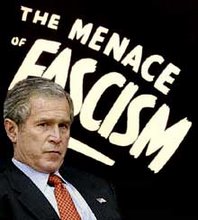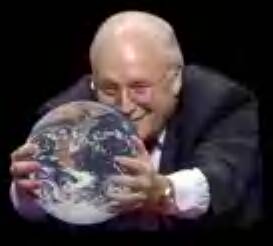So saith the owners of coal mines. Safety is just too damned expensive, after all.
I'd rather have a fireplace for warmth, a wood stove for cooking and Kerosene lanterns and candles to see with rather than the very thought that those men suffocated and more will follow in their footsteps.
Notes From the Underground
By Michael Winship
t r u t h o u t | Guest Contributor
Wednesday 22 August 2007
In late August 1963, I was an irksome adolescent on a brief, summer's end vacation to Toronto with my parents, brothers and sister. After a hard day's sightseeing, I remember lying across a bed in the hotel room watching TV. Just south of the Canadian border, two news events were transfixing America.
One was Martin Luther King Jr.'s March on Washington, a quarter of a million people gathering at the Lincoln Memorial to demand racial justice and equality.
The other was the miracle rescue of Hank Throne and David Fellin from a collapsed anthracite coal mine in Sheppton, Pennsylvania. The two men were stuck 330 feet beneath the surface and largely given up for dead until Fellin's brother and members of the United Mine Workers union persuaded state officials and mine owners to drill a small borehole down into the mineshaft and look for signs of life.
"When the drill came through, it almost hit me on the head," Fellin recalled. Five days had passed. It would take another nine to drill a larger hole and haul the men to the surface wearing parachute harnesses and football helmets. As they pulled him to safety, Fellin was singing, "She'll Be Comin' 'Round the Mountain." A few days later, both men were appearing on the game show "I've Got a Secret."
A third miner, Louis Bova, didn't make it. His body was never found. But the rescue was the first time the borehole technique was ever used to make contact with miners lost in a cave-in.
Now, exactly 44 years later, rescue workers have tried drilling boreholes time and again, futilely attempting to make contact with six men trapped more than 1,800 feet beneath the Crandall Canyon Mine in Utah. Concurrently, an effort was underway to dig a horizontal tunnel to reach the miners, but three men, including a safety inspector, were killed when it collapsed last Thursday, 1,600 feet short of its target.
That too little has changed in the four and half decades since the Pennsylvania mine rescue is grim testimony to the continued resistance of the mining industry to improving safety. There are far fewer mining-related deaths than there were back in 1963, but each additional life saved has only been achieved by frog marching the owners, kicking and screaming, to reform. With more than a little help from the current White House, they use their political clout and campaign contributions to place profit above protecting their workers.
The Crandall Canyon Mine is co-owned by the Murray Energy Corporation, which operates 19 mines in five states. According to The Associated Press, Murray Energy has "incurred millions of dollar in fines over the last 18 months" for safety violations.
One of Murray Energy's properties, the Galatia Mine in southern Illinois, which produced 7.2 million tons of coal in 2006, "has 869 violations so far this year," AP reported, "leading one mining expert to believe the company is 'just going for the production and not going for the safety ...' The mine has accumulated more than $3 million in fines dating back to 1999."
By comparison, since January 2004, the Crandall Canyon Mine has been fined more than $130,000 for 325 violations, of which 116 were considered "significant and substantial," meaning that someone could get hurt. To give you some idea of how wretched safety conditions in the mining industry remain, this is considered "remarkably good," according to Penn State professor of mining engineering R. Larry Grayson. "The injury rate for the last four years has been significantly below the national average."
And yet, CNN reported that some of the Crandall Canyon miners, including one of those trapped, "apparently were concerned about working in the area of the collapse." And a memo obtained by The Salt Lake Tribune "indicates that mine operators knew the tremendous pressure of a mountain bearing down on the mine was creating problems with the roof." In the words of Robert Ferriter, a veteran of the government's Mine Safety and Health Administration (MSHA), now director of the Colorado School of Mines' safety program, "It's dangerous. Damn dangerous."
I was wondering why the name of Bob Murray, Murray Energy's chief executive, was so familiar, and then remembered it had popped up in January 2006 when I was researching a column on the Sago mine disaster.
Murray's the guy who, four years ago, after one of his Ohio mines was shut down for safety violations, went to the district manager of the Mine Safety and Health Administration and announced, "I will have your jobs. They are gone. The clock is ticking." He cited his friendship with Senate Minority Leader Mitch McConnell, married to Secretary of Labor Elaine Chao, whose department oversees MSHA: "Mitch McConnell calls me one of the five finest men in America, and last time I checked he was sleeping with your boss."
The district manager was transferred and, last year, retired. Over the last ten years, Murray has donated $213,000 to Republican candidates, including the president; through political action committees, he has funneled another $724,500 to the GOP.
In the first days of the Crandall Canyon collapse, he was all over the tube as official spokesman (he vanished after the three rescuers were killed), crassly using the accident as a bully pulpit - emphasis on the "bully" - to attack the media, the United Mine Workers (he accused them of manipulating the disaster as part of a nonexistent attempt to organize the mine) and environmentalists combating climate change. At one of the press briefings, he took the opportunity to announce, "Every one of these global warming bills that has been introduced in Congress will eliminate the coal industry and increase your electric rates four- to fivefold.'
(According to The Washington Post, Murray "is deeply skeptical of the scientific consensus that global warming is being caused by the burning of fossil fuels such as coal, preferring to lend credence to outsider theories for climate change, such as sunspot activity or a shift of earth's magnetic north redirecting ocean currents.")
Murray's public outrages extended to his claims that an earthquake had caused the accident - when virtually all experts agree that seismographs were registering the mine collapse itself and not a natural phenomenon - and his risible denial that Crandall Canyon was engaged in "retreat mining" - whittling away at the load-bearing pillars of coal that support the mine's tunnels against gravity and the massive weight of the mountain above - for additional profit. In fact, the site of the collapse was in a section of the mine its previous owners had harvested and abandoned. Murray Energy wanted the last available scraps, no matter the human cost.
If it all were not so tragic, one would be tempted to characterize Bob Murray as the C. Montgomery Burns of the mining industry. As Burns, owner and operator of the Springfield nuclear power plant on "The Simpsons," would say, "What good is money if it can't inspire terror in your fellow man?" Or, as he once characterized a government inspector, "The watchdog of public safety, is there any lower form of life?"
In the wake of the Sago mine explosion in West Virginia last year, new legislation and regulations were passed. Companies must now monitor even abandoned, sealed-off sections of mines for poisonous and explosive gases. The Federal MINER Act, signed into law, includes new rules for emergency evacuations, underground shelters, wireless communications systems and the provision of emergency oxygen and food and water supplies.
The problem is getting the Mine Safety and Health Administration, filled with industry insiders and political appointees, yet shorthanded at the inspector level, to get off its collective butt and enforce the new rules as well as the ones that already exist. During the Bush years, its mission has been changed from regulation to what is euphemistically referred to as "compliance assistance," shifting the MSHA's stance with owners from enforcement of the law to a more supplicating "pretty please." Monday's Washington Post reported, "Mine inspectors were even renamed 'compliance assistance specialists' until an outcry forced a reversion to the original job title."
What's more, the MINER Act, while a positive development, only addresses the aftermath of a mine accident and not preventative steps necessary to protect the health and safety of mineworkers. New legislation designed to supplement the MINER Act will increase fines and enforcement powers and "require a rapid deployment of proven safety technologies.
"Accidents may still occur," the United Steelworkers noted in a statement of support for the trapped Crandall Canyon miners last week. But even deep underground in the bowels of the earth, "Work should be the place where we go to earn a living; not a place to go to die."
Michael Winship, Writers Guild of America Award winner and former writer with Bill Moyers, writes this weekly column for The Messenger Post Newspapers in upstate New York.
(In accordance with Title 17 U.S.C. Section 107, this material is distributed without profit to those who have expressed a prior interest in receiving the included information for research and educational purposes. I.U. has no affiliation whatsoever with the originator of this article nor is I.U endorsed or sponsored by the originator.)
The Nazis, Fascists and Communists were political parties before they became enemies of liberty and mass murderers.




No comments:
Post a Comment